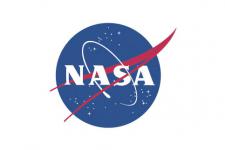
NASA Goddard Earth Sciences (GES) is one of twelve NASA Science Mission Directorate (SMD) Data Centers that provide Earth science data, information, and services to research scientists, applications scientists, applications users, and students. The GES DISC is the home (archive) of NASA Precipitation and Hydrology, as well as Atmospheric Composition and Dynamics remote sensing data and information. The DISC also houses the Modern Era Retrospective-Analysis for Research and Applications (MERRA) data assimilation datasets (generated by GSFC’s Global Modeling and Assimilation Office), and the North American Land Data Assimilation System (NLDAS) and Global Land Data Assimilation System (GLDAS) data products (both generated by GSFC's Hydrological Sciences Branch).
GES DISC is continuously enhancing data and information exploration and access and have, in fact, been making great strides in understanding how to – and implementing ways to – bring heterogeneous Earth science data sets together. This has lead to providing insights into the important topics of data inter-comparison, data bias analysis, and data quality checking.
Giovanni, a data analysis and visualization tool, has become extremely popular in allowing research communities to create time series plots, latitude/longitude graphics, and atmospheric depth plotswithout having to download any data.
Multi-dataset systems such as MAIRS, NEESPI and A-Train Data Depot also make it easy for data users to find and extract information from heterogeneous and distributed datasets.
Mirador is a rather simple-to-use data search tool that allows to find data by keyword, project, or science area (and measurement). Mirador is a good place to start data search.
Cross data center services are beginning to emerge with deployment of Simple Subset Wizard, an easy way to locate and subset data residing at various data centers. GES DISC plans to further this data access model, because, after all, locating data and services across the 12 NASA data centers should not be a deterrent.
While at the GES DISC web site, you will find links to our collaborators, other NASA data centers, the Instrument Teams that have worked hard to acquire, process, and validate the data, and NASA Federation of Earth Science Information Partners – all of which can provide additional Earth science data and information to you.
Website: http://daac.gsfc.nasa.gov/
